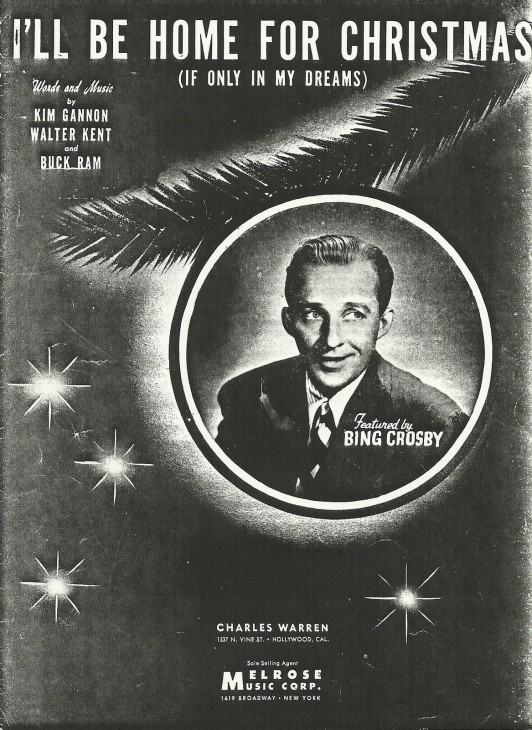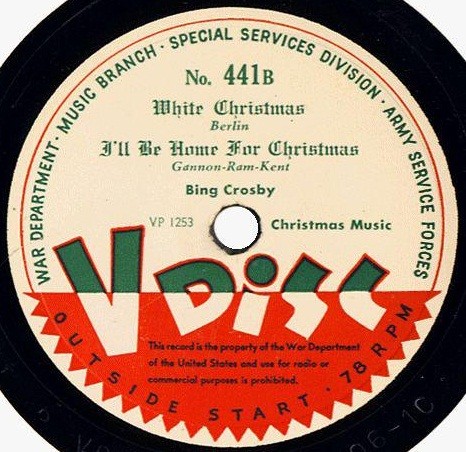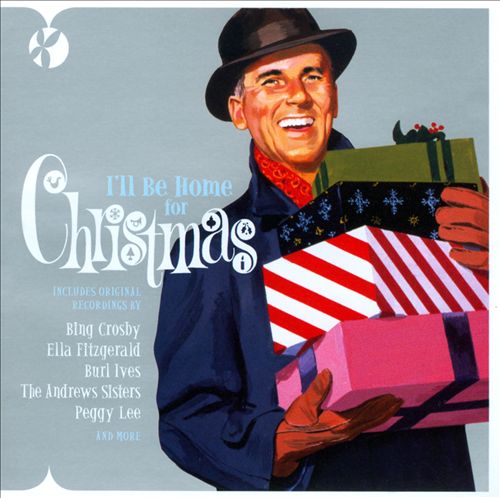
“I’ll Be Home for Christmas”… wow. Here’s a Christmas song so short and sharp that it’s only 39 words long.
I’ll be home for Christmas
You can count on me
Please have snow and mistletoe
And presents on the tree
Christmas Eve will find me
Where the lovelight gleams
I’ll be home for Christmas
If only in my dreams
Five words or less in every line. What brevity! If you’re a syllable counter, they go like this line by line:
6
5
7
6
6
5
6
6
47 syllables! Only 8 more syllables than there are words. That means almost every word is a short word, a good sign of power in writing. (Ask Hal David and Burt Bacharach.)
The multi-syllable words are Christmas (3x), mistletoe, presents, lovelight and only. Christmas is repeated three times to subtly reinforce the theme.
Just 39 words and yet “I’ll Be Home for Christmas” is still a big hit. ASCAP just named it the #10 most-performed holiday song of the last century. To put that in perspective, let’s imagine a little dream scene from a modern Nashville studio if the song were being written today. A mid-level label executive calls in a writer:
Exec: “Joe, you’re the hottest young songwriter out there. My personal trainer says so.”
Joe: “Thank you, sir.”
Exec: “I’ve got a job for you. We need a new holiday song, a big one.”
Joe: “I understand, sir. You can count on me, sir.”
Exec: “‘You can count on me,’ that’s good… Use that. Now, here’s what I need…”(The songwriter opens his tiny little MacBook Air and prepares to take notes.)
Exec: “First of all, it can’t just be any holiday song. We want a classic. This has to be one of the top 10 Christmas songs of all time.”
Joe: “That’s a tall order.”
Exec: “Now, about themes for this song. It has to be Christmassy, very Christmassy. It needs snow, presents, pumpkin pie and all that. And it needs to have plenty of emotional drama… maybe a homecoming. And romance, it should definitely have a hint of romance.”
Joe (murmuring to himself as he types): “Presents… drama… romance… snow…”
Exec: “Next, it has to be under 40 words long.”
Joe: “Excuse me?”
Exec: “40 words tops. Listen, ‘White Christmas’ is only 55 words, and it’s the biggest Christmas song of all time.”
Joe: “Actually, ASCAP says that ‘Santa Claus is Coming to Town’ is the biggest–”
Exec: “Shut up!”
Joe: “But sir–”
Exec: “Shut up! Now read that back to me.”
Joe: “All right. You want a new Christmas song. It should be one of the 10 most popular Christmas songs of all time. It has to have emotion, drama, a homecoming, and a hint of romance. It should also have presents, snow and pumpkin pie. And all this has to be under 40 words.”
Exec: “You’ve got it. But the pumpkin pie is optional. I don’t want to micromanage.”
Joe (sarcastically): “Thank you. Is that all?”
Exec: “No, there’s one more thing: This song needs a big twist finish.”
Well, you get the picture. They packed a lot into one little tune.
The writers were Kim Gannon and Walter Kent. (A third writer, Buck Ram, sued successfully for shared credit because he’d written a song with a similar title a few months earlier.) The story goes that Gannon and Kent couldn’t get any takers for the tune until Gannon sang the song for Bing Crosby while the two were playing golf. Crosby agreed to record it and it was a hit in 1943. It was re-released in 1945 on a wartime “V disc” as the B side for another Crosby hit, “White Christmas.”

This song used to have a strange effect on me: as I listened I would go into a reverie where I imagined that I was the guy coming home for Christmas in some dramatic scene. I seemed to be a secret agent of some kind, or possibly was a G-man off battling deadly criminals. The point was, everyone knew I was off in the wilds facing danger and was terribly worried about me.
Depending on the fantasy moment, I would either knock quietly on the front door on Christmas Eve, presenting myself calmly to hosannahs of delight from all gathered around the fire (they seemed to be doing a jigsaw puzzle), or if I was in secret agent mode I would come silently over the back fence, slip in the back door, and interrupt mom as she rolled out a pie dough. Naturally, she would be delighted and relieved to see me.
True to the “lovelight gleams” portion of the song, there was always a romantic element I could never quite put my finger on: a hometown girl waiting in the background, I guess, or some undefined love interest who happened to be visiting (staying with?) my family. If you’ve seen the Norman Rockwell painting Homecoming G.I., the girl off to the far left more or less catches the spirit of the thing.
Yes, I know “lovelight” could just mean hearth-and-home familial love, but I always took it in a more romantic vein. (The lyrics are also sometimes listed as “you can plan on me,” but “you can count on me” has a more emotional punch. Crosby sang it both ways.)
My personal daydreams aside, it turns out the Rockwell painting is closer to the truth than you’d think. Being released in 1943, the song was naturally associated with soldiers overseas, fighting World War II far from home. The tune was a wartime favorite, says the Library of Congress:
It touched a tender place in the hearts of Americans, both soldiers and civilians, who were then in the depths of World War II, and it earned Crosby his fifth gold record. “I’ll Be Home for Christmas” became the most requested song at Christmas U.S.O. shows in both Europe and the Pacific and Yank, the GI magazine, said Crosby accomplished more for military morale than anyone else of that era.
Not everyone loved it. The BBC is said to have banned the song “because controllers felt that the lyrics might lower morale in troops overseas.”

Since then the song has been recorded by Frank Sinatra, Elvis Presley, Amy Grant, Rascal Flatts and a host of others. It’s easy to take the melancholy over the top. (Modern singers sometimes add a sappy and destructive opening patter about how “I’m dreaming tonight of a place I love,” which is the musical equivalent of remaking the cantina scene in Star Wars so that Greedo shoots first.) In truth, it really takes an old-time crooner like Crosby or Sinatra to get the full rich feeling of the thing, with just a jigger of sadness added like rum in the eggnog.
Something that’s not so sad: Kim Gannon left 30% of his songwriting royalties to his alma mater, St. Lawrence University in upstate New York. The stipulation took effect after his wife’s death in 2000, and in the first 13 years after that the school earned $378,000 in royalties. Do a little quick math and it’s just over $29,000 a year for the school. That’s only 30% of Gannon’s cut, which means his full annual take is around $97,000. And if we guess that Gannon, Kent and Ram split the proceeds equally, that means the song’s annual take for songwriting alone is a fat $291,000. That ain’t hay.
Another way to put it is that “I’ll be Home for Christmas” is worth $36,375 a line, or $7461 a word for each of its 39 words, year after year, 70+ years after it was released. Good work, lads!
